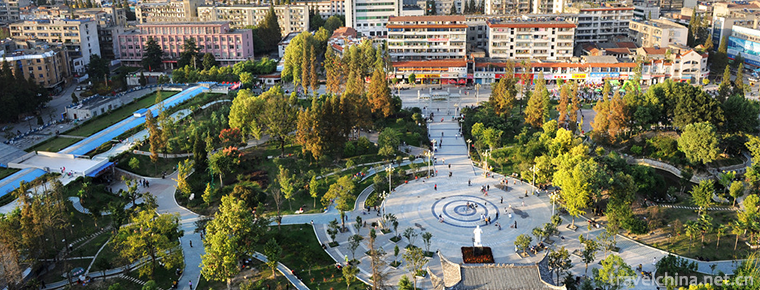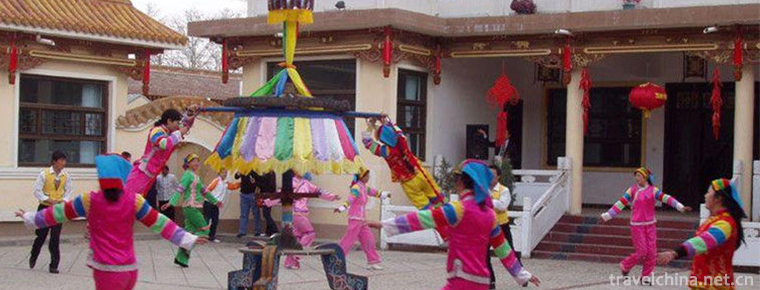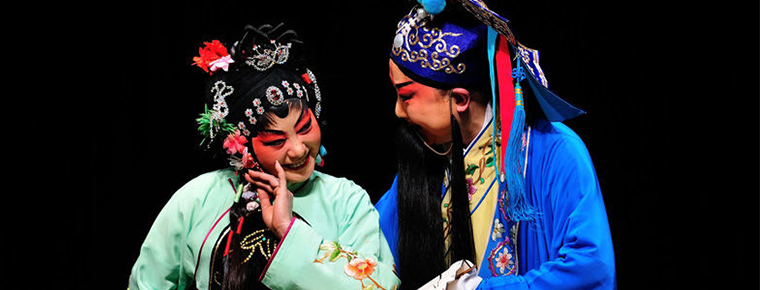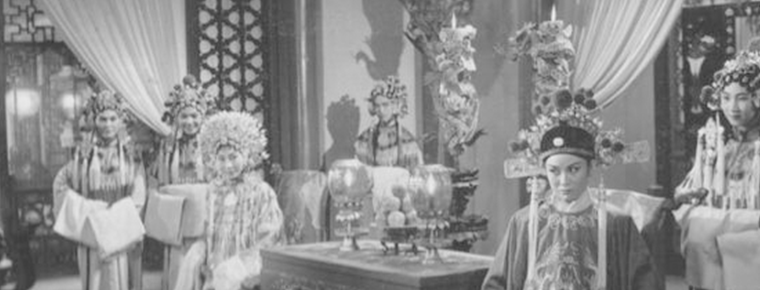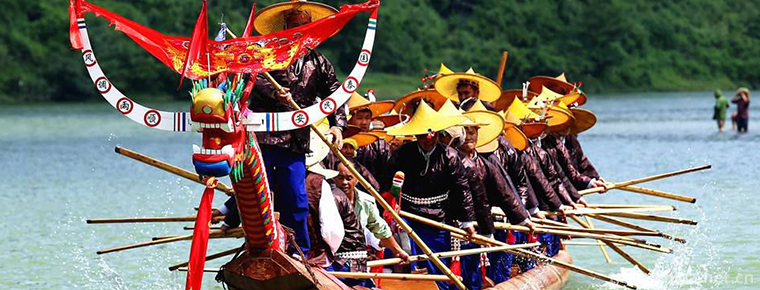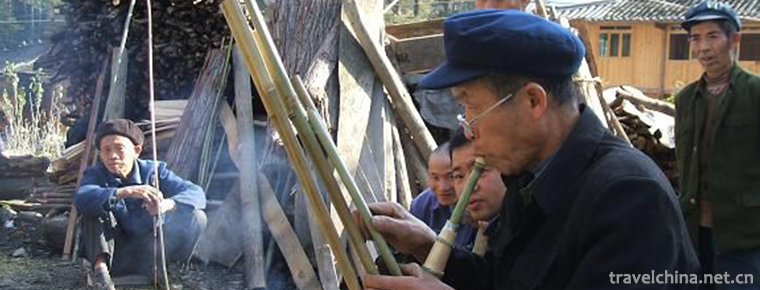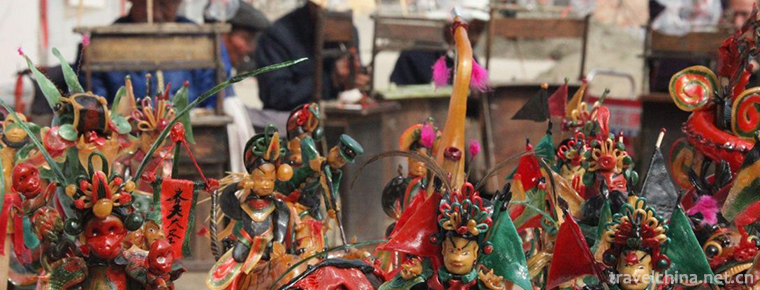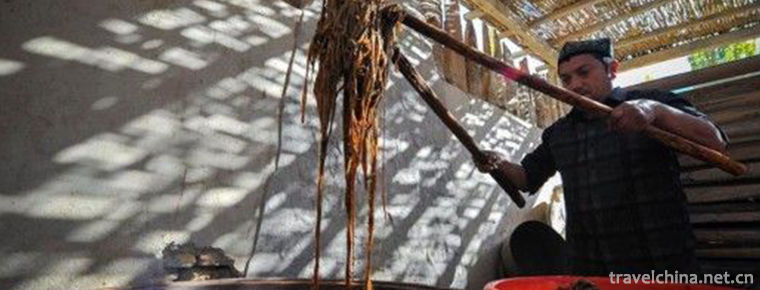Fengxiang Wood Engraving New Year Picture
Fengxiang Wood Engraving New Year Picture
Woodblock New Year Painting is a traditional folk art form with a long history in China. Fengxiang Woodblock New Year Painting is a major school of Chinese traditional folk New Year Painting. It began in Tang and Song Dynasties and flourished in Ming and Qing Dynasties. It is praised by foreign collectors as "the crystallization of Oriental wisdom". It has been collected in many famous museums all over the world. Fengxiang wood engraving New Year pictures are mainly divided into six categories: door painting, ten beautiful pictures, custom painting, drama story painting, house painting and window painting. There are more than 600 kinds of wood engraving New Year pictures at most, and more than 400 kinds of wood engraving have been restored, excavated, sorted out and innovated by Zou Liping, the 20th generation of wood engraving New Year pictures.
On May 20, 2006, the heritage was approved by the State Council and listed in the first batch of national intangible cultural heritage list.
development history
Fengxiang woodcut New Year pictures began in Tang and Song Dynasties and flourished in Ming and Qing Dynasties. Its written age can be traced back to the two years of Zhengde in the Ming Dynasty (1507 A.D.). During its heyday, there were more than 100 producers and more than 10 painting bureaus, forming relatively complete workshops for design, sculpture, printing, color painting and distribution.
The history of Fengxiang woodcut New Year pictures can be found in the genealogy of Xifengshixing Painting Bureau of the Shao family. According to the records of Shao's ancestors in Nanxiaoli Village, Fengxiang County, eight Shao's families were engaged in the production of New Year paintings before the two years of Ming Zhengde (1507 A.D.). By 1950, there were more than 690 kinds of Fengxiang woodcut New Year pictures, which were divided into five categories: portraits, ten beautiful paintings, custom paintings, dramatic story paintings, and divine code paintings. At its peak, the annual output and sales reached 6 million.
Fengxiang New Year's Painting was the most prosperous in the Republic of China. Until the founding of New China, the New Year's Painting industry in Beixiaoli and Chencun Town had been interrupted, and there were many others in Nanxiaoli. In the early 1950s, the state carried out the reform of New Year's pictures, and the traditional prints were cut off as four old ones. But the new prints were not popular. Two or three years later, people began to steal the six gods New Year pictures.
In the 1960s and 1970s, Fengxiang New Year Pictures were on the verge of extinction.
After 1978, Shao Yi, the third generation successor of Xifengshixing Painting Bureau, chaired the establishment of Fengyi New Year Painting Society, which excavated, sorted out, studied and duplicated the ancient prints of scattered folk, and restored the ancient folk traditional art of Fengxiang Wood New Year Printing.
The early 1980s was the golden age of traditional New Year paintings. During the Cultural Revolution, some small families copied incompletely, leaving behind some pictures of the Six God New Year paintings and other prints. Because of the good market and the shortage of supply and demand, more than 80 family workshops have been restored in Nanxiaoli. These workshops are not large in scale and have no name.
After 1984, Shao Yi's eldest son, Shao Liping, took over the principal Fengyi New Year Painting Company and continued to struggle for the rescue and protection of Fengxiang Wood Engraving New Year Painting. Through the efforts of Shao Liping, two volumes of "Selected Fengxiang Wood Printing New Year Pictures" were collated and published. Shaanxi Provincial Culture Department, Shaanxi Provincial Literary Union and Shaanxi Provincial Association of Folk Literature and Artists have awarded the title of Shaanxi Folk New Year Painting Family to the second, third and fourth generation hosts of Xifeng Shixing Painting Bureau, Shao Shiqin, Shao Yi and Shao Liping.
After the 1990s, advanced technology overcame traditional crafts, and offset New Year pictures occupied the private market because of their low prices. As a result, Fengxiang woodcut New Year pictures lost their market, and production was interrupted. Few of them made New Year pictures in Fengxiang, and few of them were inherited.
Inheritance and development
Behind brilliant
Fengxiang woodcut New Year pictures were popularized by the court and the people. At the same time, they frequently went to the palace of art, and then went abroad to the world. In 1964, the first exhibition of Fengxiang woodcut New Year's pictures in Germany caused a sensation, after which it was exhibited five times in the United States. In the 1980s, he went to Beijing, Shanghai and Hangzhou for several exhibitions. In 1994, he went to Australia and Hong Kong to attend the Collection Exhibition of Chinese Folk New Year Paintings. He also accompanied the Chinese Art Delegation to Paris, France, to attend the "99 Paris China Culture Week" exhibition and to demonstrate it on the spot. People from Japan, France, Thailand, Myanmar, the United States, Malaysia and other countries come here from time to time to study art. Fengxiang woodcut New Year pictures are praised by foreign collectors as "the crystallization of Oriental wisdom".
Although Fengxiang woodcut New Year's pictures have been treated with great courtesy by experts, scholars, enthusiasts and collectors, the ruthless market still makes them struggle on the verge of extinction. Modern science and technology has brought new highlights to people's appreciation and vision, but also brought great impact to traditional handmade folk crafts. The development of Fengxiang woodcut New Year pictures has been challenged severely: lack of specific measures of excavation, protection, collation, reproduction and research. Fengxiang woodcut New Year pictures have long been in a state of self-birth and self-destruction.
In the past, because the door god and kitchen god were affixed to every household of the rural people, there was a great demand for them and they did not worry about selling them at all. However, with the continuous infiltration of new cultural concepts in rural areas, modern science and technology has brought great impact on traditional handmade folk crafts. The traditional printing process of New Year's pictures is complex, all by hand, the cost is very high, and the price is naturally expensive. The machine offset printing of New Year's pictures has high efficiency, good style and rich content. Most importantly, its price is only a fraction or even a tens of times of that of woodcut New Year's pictures. Since the beginning of the 1990s, when offset New Year's paintings became more and more popular, the purchasing power of woodcut New Year's paintings has been declining.
Salvage Measures
Fengxiang woodcut New Year pictures should be constantly innovated in content and integrated into the content of modern culture. At the same time, the constant color and shape should also be updated. On the basis of occupying the market, we should improve one grade. It can be printed on silk or ribbon. In this way, it is not only conducive to preservation and development, but also improves the grade and sales price, while meeting the needs of people of high cultural level.
First of all, we should let more people understand prints, love prints and collect prints. To achieve this, we must start with education. Primary and secondary schools in Japan generally have art classrooms and printmaking studios, there are various printmaking presses, children printmaking activities are very active. Printmaking is very popular in foreign countries. People often collect prints to decorate their rooms as gifts. Printmaking is popular among people. Although printmaking art was born in China, the concept of printmaking as an elegant and independent appreciation of the value of art, in the minds of the Chinese people, compared with foreign countries, has a considerable gap.
Secondly, we should have a correct understanding of the art market. Art should be treated differently from ordinary commodities. In the commodity society under the market economy, works of art are the crystallization of artists'labor. They should be valuable in themselves. It is a kind of respect for artists and artists' labor to correctly measure works of art with value. In addition, we can also consider opening "Shaanxi Folk Art Exhibition Hall" to carry out one-stop measures of research, development and sales.
Experts believe that a complete set of Fengxiang Wood Printing New Year Paintings of Shaanxi Province with national standards should be launched. The contents include old workshops, old photographs, old templates, inheritors and historical and cultural materials. There are two end results of this work: one is the establishment of the Fengxiang Wood Engraving New Year Museum in Shaanxi Province; the other is that the government has greatly promoted the inheritance of Fengxiang Wood Engraving New Year Painting in Shaanxi Province, making it a focus of attention of the whole society.
Inheritance significance
Fengxiang wood engraving New Year pictures are mostly closely related to local folklore. It is a beautiful symbol of people's yearning for peace and tranquility. The local flavor is quite strong. Nowadays, the stock of old New Year prints is on the low side and the reputation of the collection market is high.
Only Shao Liping and his wife, from Nanxiaoli Village, Fengxiang County, Shaanxi Province, are engaged in the creation of Fengxiang woodcut New Year pictures in China. Shao Liping is the 20th generation successor of Fengxiang woodblock New Year pictures. Because of the handicraft workshop-style production and the small stock of old prints, Fengxiang wood prints have become one of the most scarce treasures in the collection market.
During the Cultural Revolution, thousands of New Year pictures of Shao Liping's family were destroyed once. From 1979 to the end of 1984, Shao Liping copied more than 80 sets of Shixing Painting Bureau's ancient patterns. By the end of 1986, Shaojia had more than 300 sets of prints. In 1992, he compiled and published one or two anthologies of "Selected Fengxiang New Year Pictures" by hand, and earned 168 works, which became a relatively complete historical material of Fengxiang woodcut New Year Pictures.
With the development of society, people turn their attention to modern paintings which are exquisitely printed and cheap. The status of woodcut New Year's pictures is at stake.
The state attaches great importance to the protection of intangible cultural heritage. On May 20, 2006, the intangible cultural heritage was approved by the State Council and listed in the first batch of national intangible cultural heritage list.
On June 5, 2007, the Ministry of Culture confirmed that Zou Liping, a representative successor of Fengxiang County, Shaanxi Province, was included in the list of 226 representative successors of the first batch of national intangible cultural heritage projects.
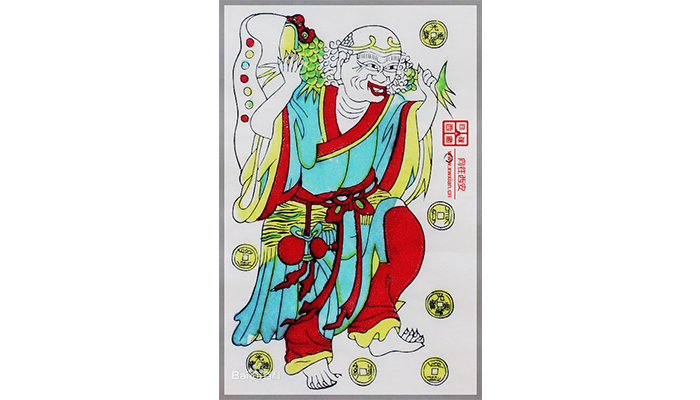
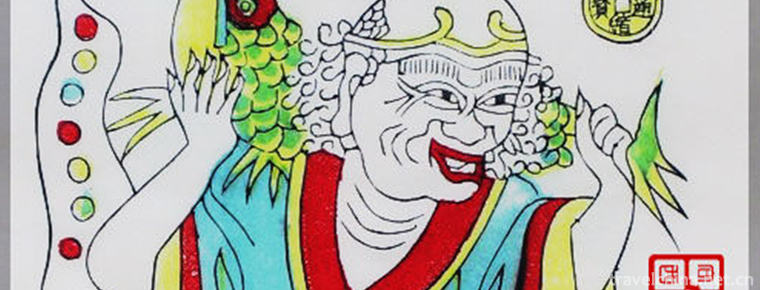
Fengxiang Wood Engraving New Year Picture
-
Shika Snow Mountain
Sheka snow mountain scenic area is located in the southwest of Jian Tang town in Shangri-La County
Views: 203 Time 2018-10-19 -
Zhongshan Park
Zhongshan Park is located in the south of the Forbidden City (Palace Museum) in the center of Beijing, west of Tian'anmen, and separated from the Palace Museum.
Views: 130 Time 2018-12-22 -
Yasuaki
Anzhao is an ancient Tu dance. It's popular with mutual aid. When celebrating festivals, harvest celebrations and weddings, people gather in the courtyard or on the wheat threshing ground to dance the
Views: 205 Time 2019-04-02 -
Sichuan Opera
Sichuan Opera, commonly known as Sichuan Opera, is mainly popular in the Han nationality areas of Sichuan, Chongqing, Yunnan and Guizhou provinces in southwestern China
Views: 211 Time 2019-04-19 -
Huangmei Opera
Huangmei Opera, formerly known as Huangmei Diao and Tea Picking Opera, originated from Huangmei Opera in Hubei Province and grew stronger than Anqing Opera in Anhui Province.
Views: 167 Time 2019-05-04 -
Miao Dragon Boat Festival
Every year from May 25 to May 27 of the lunar calendar, the Miao people living in Shibing and Taijiang counties of Guizhou Province along the Qingshui River hold this grand gathering. The Dragon Boat
Views: 150 Time 2019-06-05 -
Miao Lusheng Production Techniques
Miao Lusheng production process is complex, generally using scraping, cutting, through, hammering, clamping, drilling and other related tools, through the selection of materials, baking materials, mak
Views: 174 Time 2019-06-05 -
Sugar plastic
Sugar sculpture, one of the traditional folk handicraft products, commonly known as sugar blowing, sugar manikin, engaged in this trade called sugar blowing people, throughout the country, especially
Views: 375 Time 2019-06-18 -
Uygur Mulberry Paper Making Skills
Uygur mulberry paper takes mulberry branch endothelium as raw material, mulberry branch endothelium is sticky, smooth and delicate, easy to process, after exploitation, soaking, pot boiling, pounding,
Views: 147 Time 2019-06-28 -
Jiufeng Mountain Scenic Area
Jiufeng Mountain is located in Dabao Township in the northwest of Pengzhou. It is about 97 kilometers away from Chengdu, with an altitude of more than 3315 meters. It is the crown of Pengzhou mountains, a sacred and mysterious area
Views: 255 Time 2020-11-05 -
Meishan local culture
Meishan culture mainly includes Dongpo culture, longevity culture, Taoism culture, Buddhist culture, bamboo culture, water culture and so on. The past Meishan Dongpo Cultural Festival, Pengzu Shouxing Festival, Qingshen bamboo weaving art festival, Danling suona Festival, etc.
Views: 335 Time 2020-12-18 -
Guangan scenic spot
By 2018, there are 24 A-level scenic spots in Guang'an City, of which Deng Xiaoping's hometown is a national 5A scenic spot, and six scenic spots, including Huaying Mountain tourist area, Shenlong mountain Ba Ren stone city, baozhensai, Tianyi Vall
Views: 350 Time 2020-12-19

